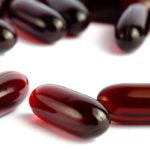Weight-Loss Injections: A Comprehensive Guide
Weight loss is a journey many embark on, often seeking effective and convenient methods to achieve their goals. Weight-loss injections have emerged as a popular option, promising to aid in shedding those extra pounds. However, understanding the science behind them, their potential benefits and drawbacks, and the various types available is crucial before considering this treatment. This guide aims to provide a comprehensive overview of weight-loss injections.
Understanding the Mechanisms of Action:
Several weight-loss injections work by targeting different aspects of the body’s metabolic processes. The most commonly used injections contain medications that either suppress appetite or increase satiety (feeling full). Others might work by influencing hormone levels related to metabolism and energy expenditure. For example, some medications mimic the effects of GLP-1 (glucagon-like peptide-1), a naturally occurring hormone that regulates appetite and insulin release. These GLP-1 receptor agonists help to slow gastric emptying, leading to increased feelings of fullness and reduced calorie intake. They can also improve insulin sensitivity, potentially benefiting individuals with type 2 diabetes. Another class of medications, often found in weight-loss injections, are amylin agonists. Amylin, a hormone secreted by the pancreas, helps to regulate blood sugar and reduces food intake. Amylin agonists work similarly by mimicking this natural process.
Types of Weight-Loss Injections:
Several types of weight-loss injections are currently available, each with its own mechanism of action, potential benefits, and side effects. The choice of injection will depend on several factors, including the individual’s health condition, medical history, and lifestyle. Consultation with a healthcare professional is essential to determine the suitability of any weight-loss injection. Some common types include:
-
GLP-1 Receptor Agonists: These are a class of medications that mimic the effects of GLP-1, a naturally occurring hormone that regulates appetite and insulin release. Brand names include semaglutide (Ozempic, Wegovy), liraglutide (Saxenda), and dulaglutide (Trulicity). These injections are often administered once weekly or monthly, depending on the specific medication.
-
Amylin Agonists: These medications mimic the effects of amylin, a hormone that helps regulate blood sugar and reduces food intake. Pramlintide (Symlin) is an example of an amylin agonist, often administered before meals.
-
Combination Therapies: Some weight-loss injections combine two or more active ingredients, targeting multiple aspects of weight management. These combination therapies can potentially offer a synergistic effect, leading to more significant weight loss.
Potential Benefits of Weight-Loss Injections:
Weight-loss injections can offer several benefits for individuals struggling with obesity or overweight. These benefits may include:
-
Significant Weight Loss: Clinical trials have shown that weight-loss injections can lead to significant weight loss, often surpassing what can be achieved through diet and exercise alone. The extent of weight loss can vary depending on the individual, the type of injection, and adherence to lifestyle changes.
-
Improved Metabolic Health: Many weight-loss injections can improve various metabolic parameters, such as blood sugar control, blood pressure, and cholesterol levels. This is particularly beneficial for individuals with type 2 diabetes or other metabolic disorders.
-
Reduced Risk of Obesity-Related Complications: By facilitating weight loss and improving metabolic health, weight-loss injections can help reduce the risk of developing or worsening obesity-related complications, including heart disease, stroke, type 2 diabetes, and certain types of cancer.
-
Increased Energy Levels: Some individuals report an increase in energy levels after starting weight-loss injections, potentially due to improved metabolic function and reduced feelings of hunger.
Potential Side Effects and Risks:
While weight-loss injections can offer significant benefits, they are not without potential side effects and risks. Common side effects can include nausea, vomiting, diarrhea, constipation, and abdominal pain. These side effects are often mild and temporary but can be managed with appropriate medication adjustments or lifestyle modifications.
More serious, albeit less common, side effects include pancreatitis, gallbladder problems, kidney problems, and increased risk of suicidal thoughts. Regular monitoring by a healthcare professional is crucial to detect and manage any potential adverse effects. Individuals with a history of pancreatitis, severe gastrointestinal disorders, or a strong family history of these conditions should exercise particular caution.
Eligibility and Considerations:
Eligibility for weight-loss injections typically depends on several factors, including Body Mass Index (BMI), presence of obesity-related comorbidities, and overall health status. A healthcare professional will conduct a thorough assessment to determine if weight-loss injections are appropriate. The decision to use these injections should be a collaborative one between the patient and their healthcare provider, taking into account the individual’s medical history, lifestyle, and preferences.
Lifestyle Modifications Remain Crucial:
It’s crucial to understand that weight-loss injections are not a magic bullet. They are most effective when combined with a comprehensive weight management program that includes dietary changes, regular physical activity, and behavioral modifications. Weight-loss injections work best as part of a holistic approach to weight management. They can provide a helpful boost to jumpstart weight loss and improve metabolic health, but sustained weight loss relies heavily on lasting lifestyle changes.
Cost and Accessibility:
The cost of weight-loss injections can vary significantly depending on the type of injection, the dosage, and insurance coverage. Accessibility can also be a concern, as not all healthcare providers offer these injections. It’s essential to discuss the costs and insurance coverage with both your healthcare provider and your insurance company before starting treatment.
Monitoring and Follow-Up:
Regular monitoring by a healthcare professional is crucial throughout the treatment period. This involves monitoring weight loss, assessing side effects, and adjusting medication as needed. Follow-up appointments allow for assessment of progress, addressing any concerns, and ensuring the safety and effectiveness of the treatment.
Choosing a Healthcare Provider:
Selecting a qualified and experienced healthcare provider is paramount. Look for providers with expertise in weight management and obesity medicine. They should be able to provide comprehensive guidance, assess your suitability for weight-loss injections, and monitor your progress throughout the treatment. Open communication with your healthcare provider is vital to ensure your safety and optimal outcomes. Don’t hesitate to ask questions and express your concerns throughout the process. The decision to use weight-loss injections should be well-informed and based on a thorough understanding of the benefits, risks, and alternatives available.





